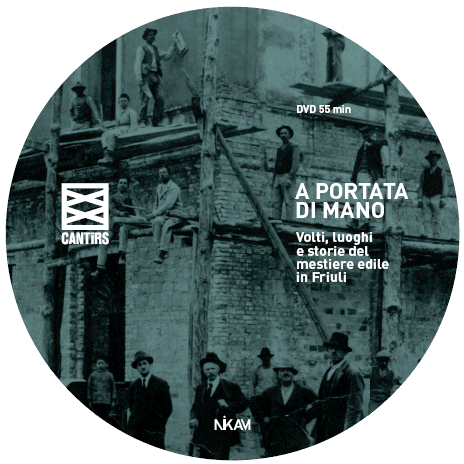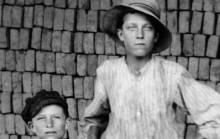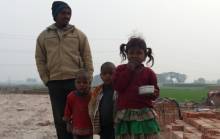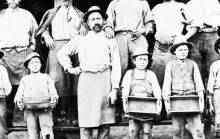Underage migration
Labour and migration of minors were a widespread phenomenon and a fundamental data of the national and Friulian economical profile between Eighteenth and Nineteenth century, which descends from the second industrial revolution. Children were an important resource for entrepreneurs, who hired them for their physical pliability and exploited them for certain tasks that an adult man could not carry out. The underpaid working children were forced to undergo back-breaking shifts that lasted up to fourteen-fifteen hours a day. They worked as chimney sweepers, miners, in furnaces or factories. Children carried out very heavy jobs that weakened them and very often lead them to death. The work environment was dirty and hygienic conditions were inhumane.
“We can estimate that on the threshold of World War I in the province of Udine about 15-16.000 boys between 12 and 15 years old are employed in various working activities and that, among them, about 5000 are seasonal workers abroad” (Matteo Ermacora, La scuola del lavoro).
Child labour today
The mistreatment of underage workers, due to precarious economic and social conditions, is still a reality. With the approval of the Convention on the Rights of the Child (1989), the International Community has committed itself to respect some obligations towards minors’ rights, but there are still many children that are forced to work in order to guarantee survival for themselves or for their families. According to ILO (International Labour Organization) there are 200 million minor workers in the world, often engaged on full time basis, deprived of their right to study, to play and to grow up problem free. Minor labour is present in very poor developing nations in Africa, Asia and Latin America. It also persists in economically advanced countries but in different forms.In Italy
It is reckoned that today, in Italy, there are 260.000 minor workers, 1,5% of which are hired on building sites. 15% of 14-15 year old workers are involved in activities at risk of mistreatment (Report Ass. Bruno Trentin, Save the Children, 2013). In the province of Udine minor workers in the construction trade are disappearing: there were 37 in 2008, but only 2 in 2013, which is 0,03% of the workers in this sector (data by CEMA, Udine).This study was carried out by the students of the class IV B, ISIS “Caterina Percoto” - Liceo Economico Sociale - Udine.

A portata di mano.
Volti, luoghi, storie del mestiere.
Realizzato da Nikam Immagine Video, Udine (2014), a cura di Paolo Comuzzi, Andrea Trangoni, Sabrina Tonutti. Il documentario si articola in una serie di video-interviste a lavoratori, imprenditori edili, insegnanti e Direttori di istituti aventi a che fare con l’edilizia friulana. Le tematiche più salienti affrontate sono: la trasmissione del sapere di mestiere ai giovani; come è cambiato il settore edile nel giro di mezzo secolo; l’emigrazione in edilizia; l’evoluzione tecnologica e normativa; storie personali di mestiere; storia delle fornaci; edilizia idraulica; la lavorazione della pietra; il mosaico; la prefabbricazione; tecniche e materiali in edilizia. Oltre alla video-interviste il documentario propone riprese video realizzate ad hoc e una ricca selezione di materiale filmico/fotografico d’archivio.
LE TUE FOTO

per spedirci del materiale
fotografico













 museo@cassaedileud.it
museo@cassaedileud.it